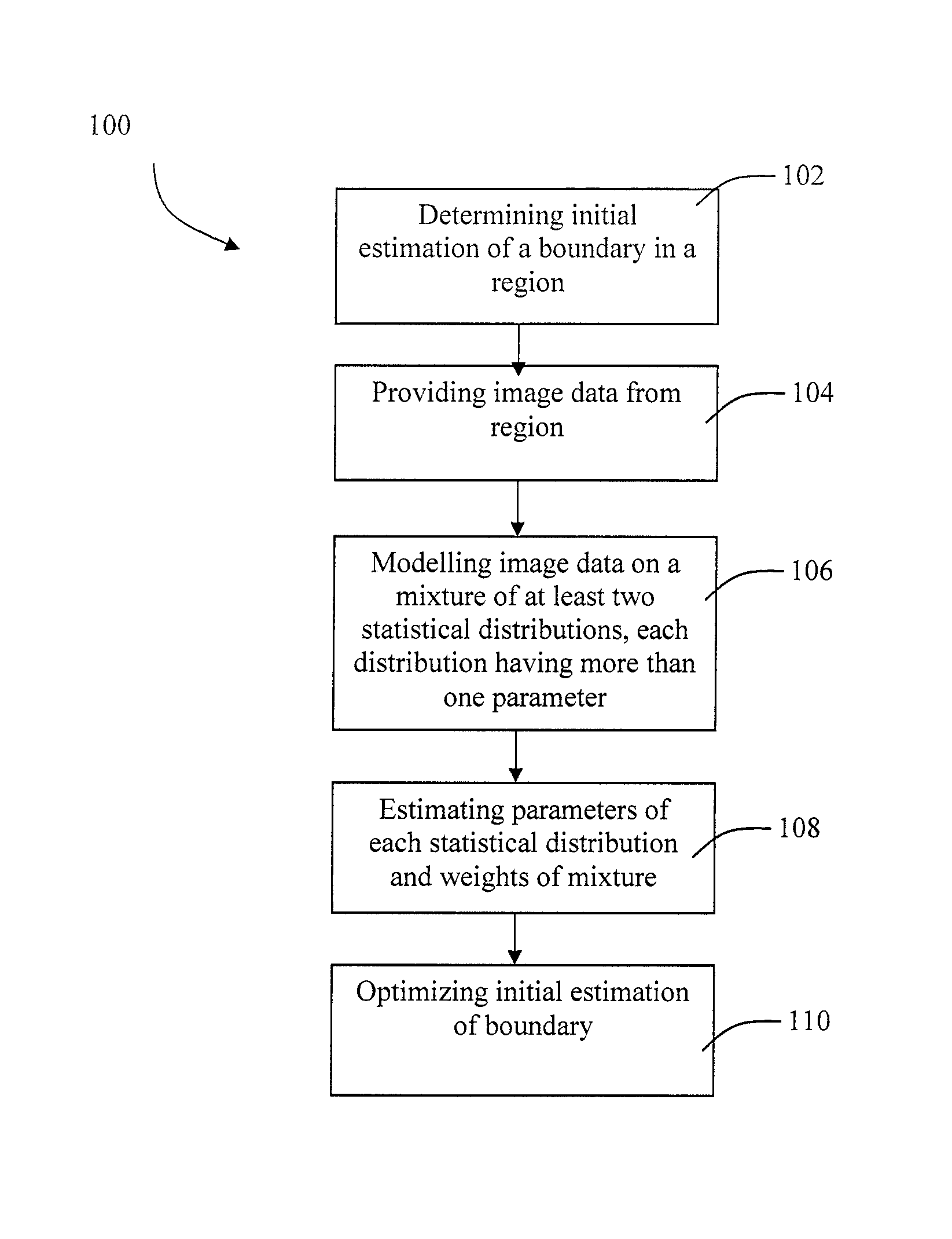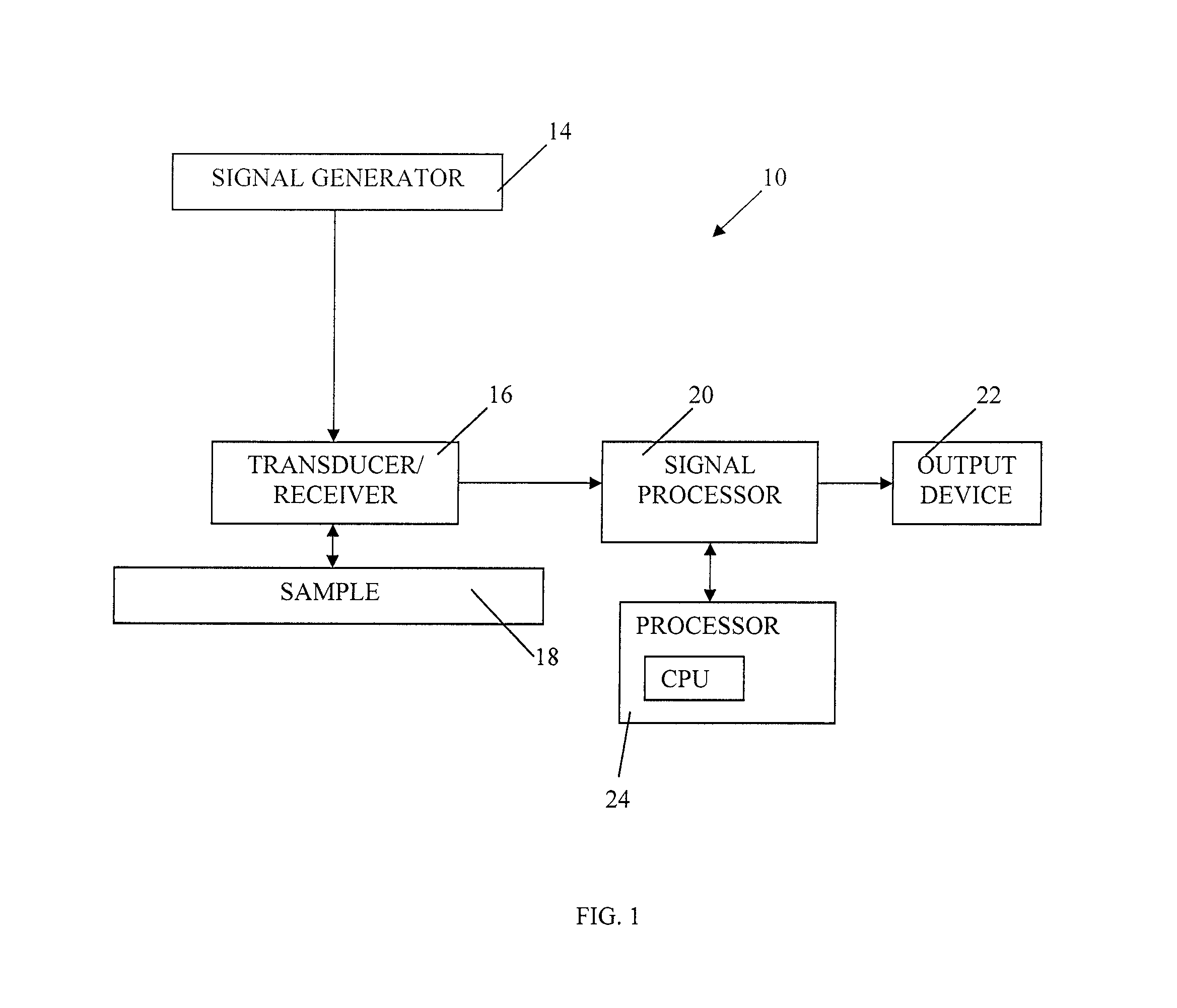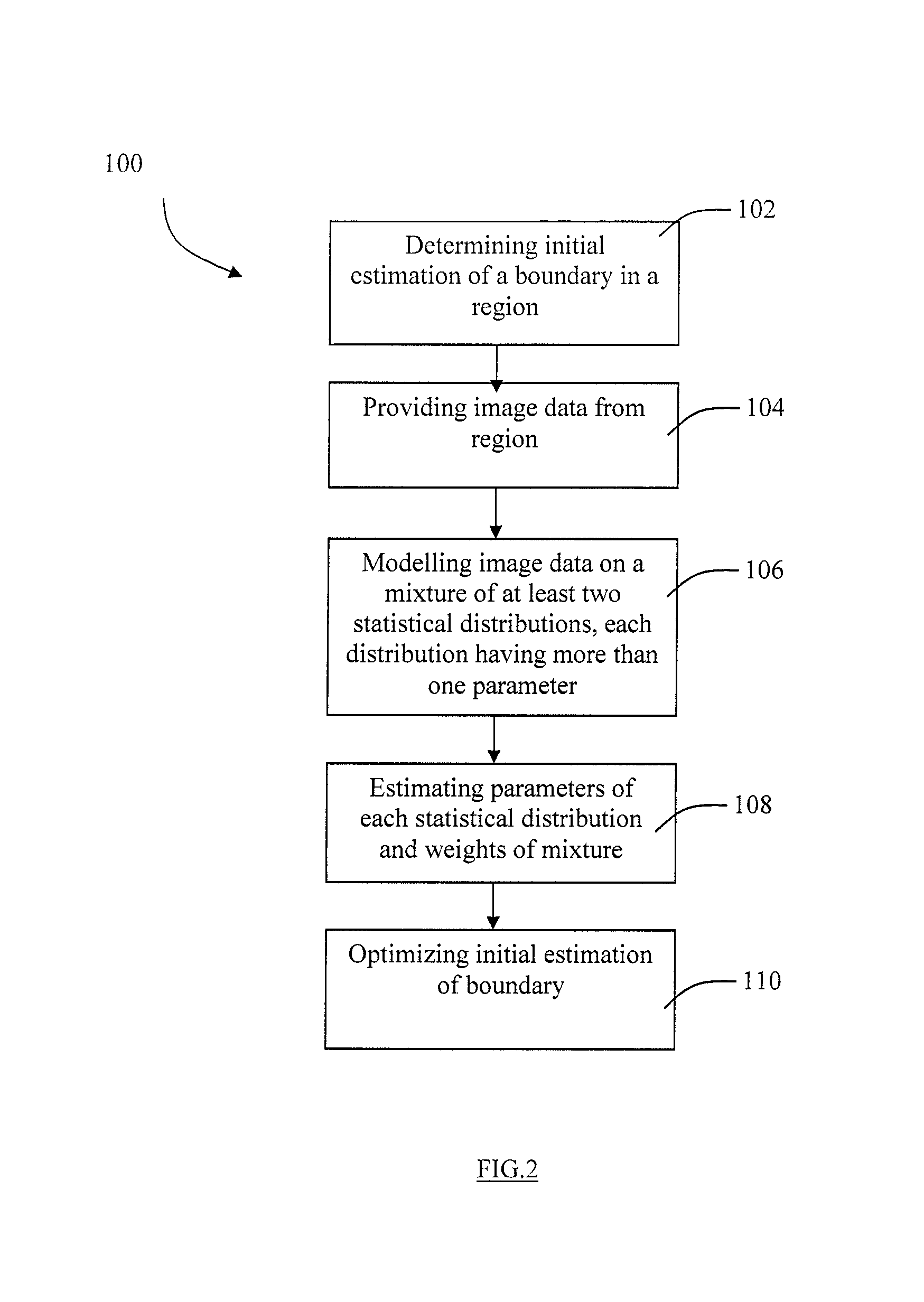Image segmentation
a technology of image segmentation and image, applied in image enhancement, instruments, ultrasonic/sonic/infrasonic diagnostics, etc., can solve the problems of time-consuming task, variability between observers and subjective interpretation, and hampered ultrasound image diagnosis
- Summary
- Abstract
- Description
- Claims
- Application Information
AI Technical Summary
Benefits of technology
Problems solved by technology
Method used
Image
Examples
example 1
[0132]The semi-automated method of the first embodiment of the present invention (Steps 102-114) was evaluated by comparing images segmented by the semi-automated method to manually segmented images as a comparison.
[0133]Method:
[0134]N=30 video sequences of B-mode images from 15 healthy subjects were considered. It was presumed each subject had disease-free carotid arteries. For each subject, longitudinal views of the right distal common carotid artery and right proximal internal carotid were acquired by one expert radiologist, for a total of two video sequences per patient. The number of expert technicians for the manual segmentations was two.
[0135]Two versions of the method of the first embodiment were tested: 1) the MGD model (which is equivalent to a mixture of Nakagami distributions after the change of variable I=r2) estimated by the EM algorithm; 2) the Mixture of Exponential Distributions (MED) model (which is equivalent to the mixture of Rayleigh distributions after the same...
PUM
 Login to View More
Login to View More Abstract
Description
Claims
Application Information
 Login to View More
Login to View More - R&D
- Intellectual Property
- Life Sciences
- Materials
- Tech Scout
- Unparalleled Data Quality
- Higher Quality Content
- 60% Fewer Hallucinations
Browse by: Latest US Patents, China's latest patents, Technical Efficacy Thesaurus, Application Domain, Technology Topic, Popular Technical Reports.
© 2025 PatSnap. All rights reserved.Legal|Privacy policy|Modern Slavery Act Transparency Statement|Sitemap|About US| Contact US: help@patsnap.com



